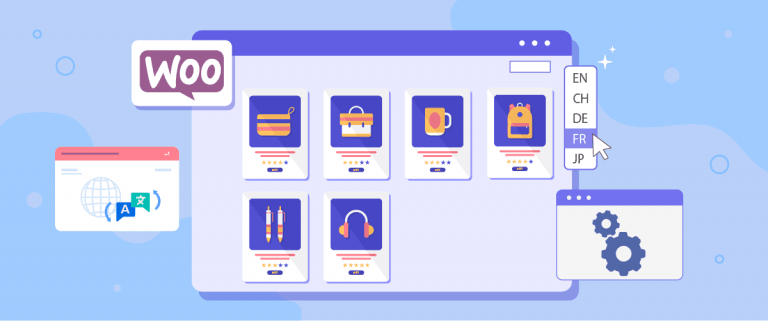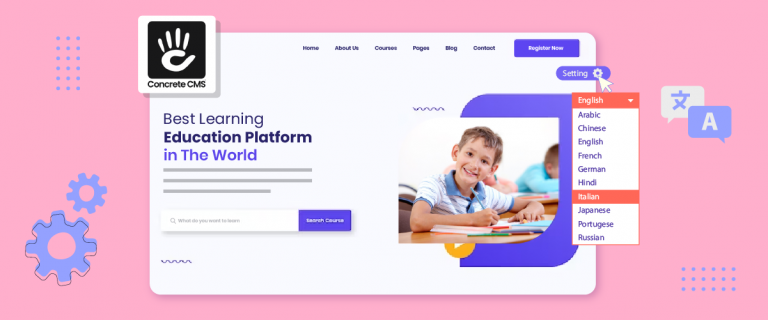Multilingual content is one of the most effective ways to reach a global audience in the digital age. By providing content in multiple languages, you can build closer relationships with users and support international SEO strategies. However, many people still don’t understand how to create good SEO-friendly multilingual content.
Therefore, this guide will discuss how to create SEO-friendly multilingual content, important components to consider, and best practices for implementing it!
What is multilingual content?

Multilingual content is the process of providing optimized content in multiple languages to reach audiences in different regions and cultures. This involves more than just translating text from one language to another; content must be locally adapted to suit the language, cultural norms, and preferences of the target audience.
In the context of SEO, this is known as multilingual SEO, which is the practice of optimizing websites to appear high on search engine rankings in different languages and regions. This process includes technical SEO configurations such as the use of hreflang tags, keyword research in multiple languages, content localization, and regular performance tracking.
More than 52% of people speak English on the internet, and about 48% communicate in languages other than English, which is why multilingual content is a necessity for global businesses.
Why multilingual content is important for global strategies?

Creating SEO-friendly multilingual content can provide a number of benefits for businesses. Here are some of the reasons why the importance of multilingual content for a global strategy.
- Expanding presence in different countries: By offering content in multiple languages, a business can strengthen its presence in different countries, ultimately helping it reach audiences that may have been underserved before.
- Provides convenience of use: Content that is appropriate to the local language and culture offers a more personalized user experience, which makes the audience feel more comfortable and connected.
- Stand out from the competition: Businesses that provide content in local languages often have an advantage over competitors who only offer content in one language.
- Eases consumer decision-making process: Easy-to-understand content in their language helps audiences make decisions faster, increasing their likelihood of choosing your product or service.
With a well-planned multilingual content strategy, businesses can reach global markets more effectively, build strong relationships, and make a more tangible impact at the local level.
Key components of SEO-friendly multilingual content

Creating multilingual content that ranks well and engages diverse audiences requires more than translation. It involves a mix of cultural adaptation, keyword optimization, precise localization, and SEO strategies that ensure content effectively reaches the right audience. Here are some key components of multilingual content.
Cultural relevance in content
The first and most crucial component of multilingual content is cultural relevance. It’s not enough to merely translate content; you must adapt it to align with the cultural norms, values, and preferences of your target audience. For example, content tailored for Spanish-speaking audiences will differ significantly from content aimed at Arabic-speaking readers. The humor, tone, imagery, and even examples used should reflect the cultural background of your audience.
This is because cultural missteps can alienate users, even if the content is technically correct. A multilingual blog post about holidays, for instance, might emphasize Christmas traditions for a European audience while focusing on Eid celebrations for Middle Eastern readers. High-quality multilingual content understands these differences and uses them to create deeper, more meaningful connections with diverse audiences.
Keyword for multilingual audiences
Keywords are the backbone of any SEO strategy, and when it comes to multilingual content, they become even more critical. Directly translating keywords from one language to another rarely works because search behaviors and preferences vary by region. For example, the term “car rental” in English translates to “aluguel de carros” in Portuguese. However, Portuguese users may also commonly search for “locação de veículos”, which carries the same meaning but uses different phrasing.
This highlights why keyword research in native languages is essential. A well-executed multilingual strategy involves identifying these regional international keyword variations and incorporating them naturally into the content. This ensures your content resonates with local audiences and aligns with how they search, boosting both traffic and engagement.
High-quality translations & localization
Only translation is not enough for successful multilingual content. Localization, which involves adapting content to fit the cultural and linguistic context of a specific audience, is equally important. For example, while the English term “vacation” translates to “holiday” in British English, it’s referred to as “ferias” in Spanish. Beyond language, localization ensures measurements, currency, and even idiomatic expressions are appropriate for the target region.
Using AI machine translation tools can be a great start, but human oversight is crucial. Automated translations often miss subtle cultural nuances or context, which can confuse readers or lead to awkward phrasing. After generating translations, it’s essential to review and refine the content to ensure cultural appropriateness and clarity.
Multilingual SEO friendly
Finally, even the best content won’t perform well without the proper SEO optimizations. Multilingual SEO includes specific techniques like:
- Implementing hreflang tags: These tags inform search engines about language and regional targeting, helping direct users to the correct version of your website.
- Using canonical tags: Indicate the original version of a page to prevent duplicate content issues across multiple language versions, which helps search engines avoid indexing duplicates.
- Optimizing page speed and mobile friendliness: Many users globally rely on mobile devices, so fast-loading, mobile-optimized pages are essential for ranking higher.
- Optimized metadata for multilingual audiences: Metadata, including titles and descriptions, should be translated and localized for each target language. This ensures that search engines and users can easily identify the relevance of your content in their preferred language.
- Translated URLs and slugs: Translating URLs or slugs into the target language makes your content more accessible and user-friendly. For instance, instead of a generic URL like example.com/products, you can use example.com/produits for French users or example.com/productos for Spanish audiences. Localized URLs not only improve user experience but also signal to search engines that your content is tailored to specific languages or regions.
By combining these strategies, multilingual SEO ensures that your localized content is accessible, relevant, and optimized for search engines, ultimately boosting your reach and conversions across global markets.
How to create SEO-friendly multilingual content

Here’s a step-by-step guide to achieving SEO-friendly multilingual content.
Multilingual keyword research
The first step to creating multilingual content is understanding how your audience searches in their native language. Instead of directly translating your keywords, conduct localized keyword research. This helps identify idiomatic expressions, cultural nuances, and phrases that are most relevant to each region. For example, a term that ranks highly in English might not even be searched in another language, so refining your strategy is key.
By targeting region-specific keywords, you can tailor your content to meaningfully meet your audience’s intent. This improves your site’s relevance and engagement while increasing your chances of appearing in local search results. Use tools like Google Keyword Planner or Semrush with geotargeting options to find the best keywords for each language.
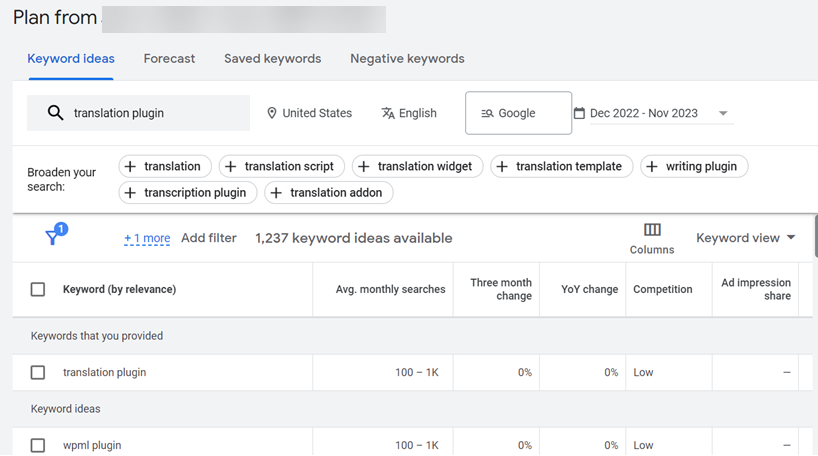
Create original content
When building multilingual content, avoid relying solely on translations of your existing pages. Instead, create original content tailored to the cultural context of your target audience. Localized content is more engaging because it speaks directly to the audience’s needs and values. It may involve adjusting humor, examples, or tone to align with cultural preferences.
For instance, if your English page has examples relevant to the U.S., adapt them to suit the target country. Not only does this build trust, but it also improves your search engine rankings by signaling that your content is relevant and unique. Creating original content shows users you’re not just translating but genuinely catering to their market.
Optimize on-page SEO
On-page SEO for multilingual websites requires careful attention to several components to ensure both users and search engines can easily navigate and understand your content. Key components include:
- Keyword placement: To enhance search visibility without compromising readability, naturally incorporate relevant, localized keywords within the title, headers, body text, and metadata.
- Alt attributes for images: Add translated, keyword-optimized alt text for images to improve accessibility and boost search rankings for image-related queries.
- Clear heading structure: Use H1, H2, and H3 tags consistently and logically to create a well-organized, scannable structure for both users and search engines.
- Internal linking: Maintain a logical and consistent internal linking structure, ensuring that URLs follow a standardized format across all languages for easy navigation.
- Meta tags optimization: Translate and localize title tags and meta descriptions to include keywords and align with the language and preferences of the target audience.
By focusing on these components, you create a cohesive, optimized site that enhances user engagement and search engine rankings. For example, a clear structure and localized URLs ensure users from different regions can quickly find relevant information while boosting your website’s multilingual SEO performance.
Use automatic website translation
Website translation tools simplify the process of creating multilingual content, making it easier to cater to a global audience. However, choosing the right tool is crucial. High-quality solutions, like Linguise automatic website translation, offer not only automatic translations but also the flexibility to make manual edits for better localization. This ensures the translations remain accurate and culturally relevant, giving you the best of both automation and human touch.
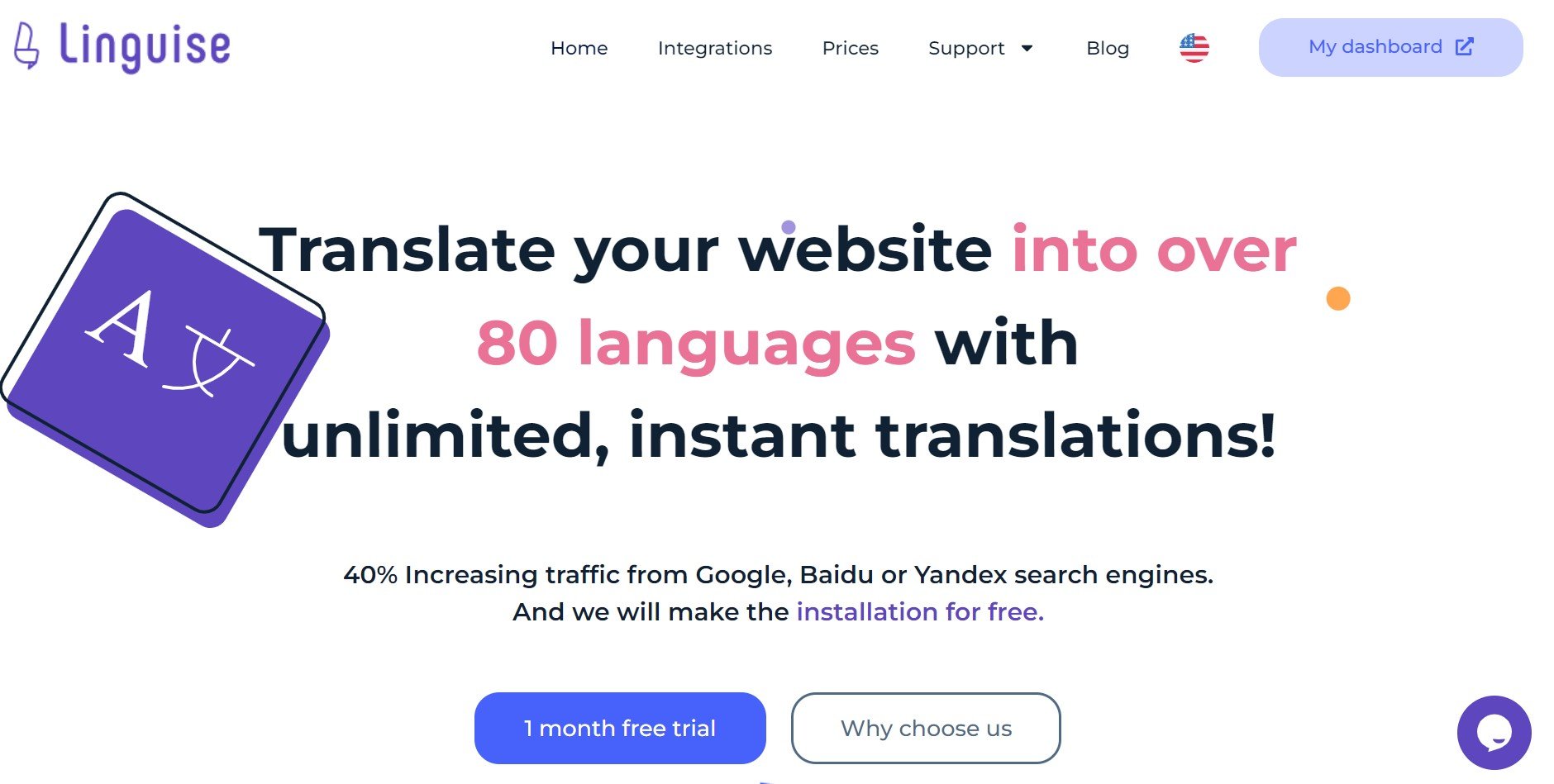
One of Linguise’s standout features is its ability to manage URL and metadata translations automatically. This means you don’t worry about manually localizing URLs, title tags, or meta descriptions. The tool ensures that each translated version of your site includes localized URLs and metadata, seamlessly aligning with the language and preferences of your target audience.
Localized content
After the automatic translation is complete, you can refine it further by editing specific elements. This approach ensures that your content is not only translated but also optimized for maximum impact in every language. Localization content takes you beyond translation by adapting it to fit the cultural context of your target audience.
For instance, while a formal tone may work in German, a more casual and friendly approach might be better suited for Brazilian Portuguese. In addition, here are some elements that can be localized.
- Keywords: Adjust keywords to align with local search trends and improve SEO performance in specific regions.
- Images: Replace visuals to reflect cultural preferences, ensuring they are relatable to the target audience.
- Formats: Adapt date, time, and address formats to match local conventions, such as switching from MM/DD/YYYY to DD/MM/YYYY.
- Currencies: Display prices in the local currency, with appropriate symbols and decimal formats.
- Units of measurement: Convert units like miles to kilometers or pounds to kilograms based on regional standards.
- Tone and style: Adjust the tone of your content, such as switching from formal to casual language, depending on cultural expectations.
Here’s one of example localization content by adjusting the image according to the destination country. Coca Cola’s website is available in Korean, which is why they also use their iconic image of a Korean girl band.
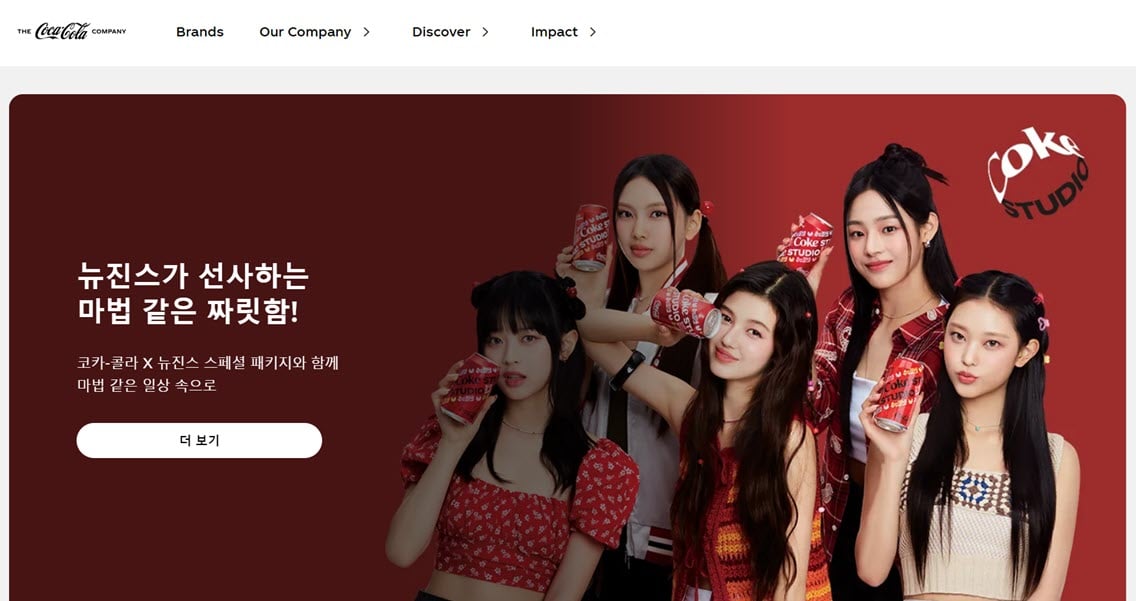
Optimize metadata and URLs
Metadata and URLs play a crucial role in multilingual SEO. Titles, meta descriptions, and slugs should be carefully translated and localized for each target region and language. These elements not only help users understand your content better but also improve how search engines index and rank your pages. A properly localized URL structure, combined with hreflang tags, ensures that search engines can accurately serve the right version of your site to the correct audience.
For example, if your e-commerce page for shoes has the URL “/shoes” in English, the Spanish version should use “/zapatos.” This localization helps users quickly identify relevant content while boosting your site’s SEO performance. Additionally, consistent and well-structured URLs contribute to a seamless user experience, making it easier for users to navigate your multilingual site.
Linguise simplifies this process by automatically managing URL translations and metadata localization, ensuring accuracy and consistency across languages. However, it’s a good practice to review these elements manually to ensure there are no errors or inconsistencies when translating into other languages. This final check guarantees your multilingual content is polished and optimized for both users and search engines.
Optimize website speed for global audience
Lastly, website speed is critical for multilingual sites, as global audiences often access content on different devices and networks. Optimize images, enable caching, and use a content delivery network (CDN) to ensure your site loads quickly worldwide.
For example, a slow-loading site might lose visitors in regions with slower internet speeds. By improving load times, you not only enhance user experience but also improve your chances of ranking higher in search engines globally. A faster site signals to search engines that you prioritize quality and accessibility.
Best practices for multilingual SEO integration

Integrating multilingual SEO into your website is crucial for reaching global audiences and ensuring that your content performs well across different regions and languages. Here are the best practices for integrating multilingual SEO content.
Structuring websites for multilingual audiences
A well-structured website is essential for multilingual SEO, as it helps both search engines and users navigate through various language versions of your site. The most common approach involves using subdirectories (e.g., /en for English, /es for Spanish) or subdomains (e.g., en.example.com).
This URL structure not only makes it easier to organize content but also ensures that search engines can clearly identify and index each language version. By creating separate, distinct sections for each language, you can also optimize content specifically for local audiences, which boosts your chances of ranking higher in search results.
Aligning content with local search intent
Aligning your content with local search intent is a cornerstone of multilingual SEO success. Each region may have different search behaviors and preferences, so it’s crucial to conduct thorough keyword research in each language. For example, the word “chocolate” might have a different search volume or connotation in other countries. By researching local keywords and search trends, you ensure your content speaks directly to the needs and interests of your target audience, improving your chances of ranking well in regional searches.
Furthermore, localization goes beyond just translation. It’s important to tailor content to fit the cultural nuances of each target market. This might involve adjusting the tone, changing idiomatic phrases, or even selecting images that resonate better with local tastes. By understanding and aligning with local search intent, you can create content that feels more relevant and engaging.
Optimizing page load speed across regions
Page load speed is a critical factor for user experience and SEO, and it’s even more important for multilingual websites with a global audience. Different regions may have varying internet speeds, so ensuring that your website loads quickly across all locations is essential for keeping users engaged. Techniques like image compression, caching, and choosing a content delivery network (CDN) with servers near your target audience can drastically improve load times. A fast-loading website reduces bounce rates and boosts rankings on search engines like Google, which prioritize user experience.
It’s also essential to consider server location to optimize for different regions. Hosting your website closer to the target audience improves load speed and reduces latency. Additionally, website speed can be impacted by the size and complexity of your content.
Building multilingual backlinks
Link building is an essential part of any SEO strategy, and it becomes even more important when working with multilingual websites. Acquiring backlinks from local, authoritative websites in each target region helps improve your website’s domain authority and increases your chances of ranking higher in regional search results. This could involve reaching out to local bloggers, influencers, or businesses to build relationships and secure backlinks.
Local backlinks also help search engines better understand your content’s relevance to specific regions. For example, a link from a Spanish-language blog will be more valuable for your Spanish version of the site than for your English version. Therefore, building a diverse, region-specific backlink profile can greatly enhance your site’s visibility in local search engines.
Common mistakes to avoid

When it comes to creating multilingual content, common mistakes are often made. Here are the mistakes you should avoid.
Overreliance on translation without localization
One of the most common mistakes when creating multilingual content is relying too heavily on translation without considering the need for localization. Translation tools may offer accurate text conversion, but they can’t account for cultural context, idiomatic expressions, or local preferences. While a literal translation might get the message across, it often fails to engage users or make the content feel natural in their language. Localization goes beyond translation—it adapts the content, tone, and context to better align with local customs, values, and expectations.
Without localization, even a perfectly translated message can sound awkward or out of place. For instance, humor, slang translation, or regional references may not have the same effect or meaning in another language. This disconnect can cause users to disengage or even mistrust your brand. It’s crucial to tailor both the language and the overall message to fit the specific cultural nuances of each market, ensuring your content resonates with the audience in a more meaningful way.
Ignoring cultural nuances in design and messaging
Design and messaging should always reflect the cultural values and preferences of your target audience. Ignoring cultural nuances can result in content that feels foreign or even inappropriate to local users. For example, certain colors or images may have different meanings in different cultures, and what works in one country may be seen as offensive or confusing in another.
To truly engage with a global audience, you need to adapt not only the language but also the visual and messaging elements of your site or content. This means considering color schemes, imagery, and symbols that will appeal to your target demographic. By embracing cultural diversity in your design and messaging, you demonstrate respect and understanding, which builds trust and helps foster a stronger connection with local audiences.
Duplicating content
Duplicating content across languages is a common mistake that can negatively impact both user experience and SEO performance. When translating content from one language to another, it’s tempting to create identical copies for each language version. However, this approach doesn’t take into account the unique needs and preferences of each market. Simply translating the same content into multiple languages can make it feel irrelevant to local users and result in lower engagement rates.
To avoid this issue, it’s crucial to implement canonical tags to indicate the original version of the content to search engines. This helps search engines understand that the content on your translated pages isn’t a duplicate but rather a translation of the original page. By using canonical tags, you prevent any SEO penalties for duplicate content while still providing tailored translations for each market.
Inconsistent branding across languages
Consistency in branding is key to building a strong global identity, but it’s a common mistake to overlook the importance of maintaining consistent branding across different languages. While the core message and values of your brand should remain the same, it’s essential to ensure that the way your brand is presented resonates with each cultural group. For example, the way your logo, color scheme, or tagline is used may need to be adjusted to suit local tastes and cultural preferences.
It’s important to balance the global coherence of your brand with local relevance. While your brand should maintain its identity across markets, subtle changes in messaging, imagery, or even the tone of voice may be necessary to align with local expectations.
Conclusion
Creating SEO-friendly multilingual content is essential in a business’s global strategy. By adapting content to suit local cultures, conducting relevant keyword research, and ensuring quality translation and localization, companies can expand market reach and improve user experience in different regions. Using the right SEO techniques, such as hreflang tags and translated URLs, also helps improve visibility and ranking in search engines.
To make this process easier, you can use a powerful automatic translation tool like Linguise. This tool not only automatically translates your website but also allows you to edit it manually to ensure cultural appropriateness and accuracy. Sign up for an account with Linguise today to get started with effective and thorough automated website translation for your multilingual content.


